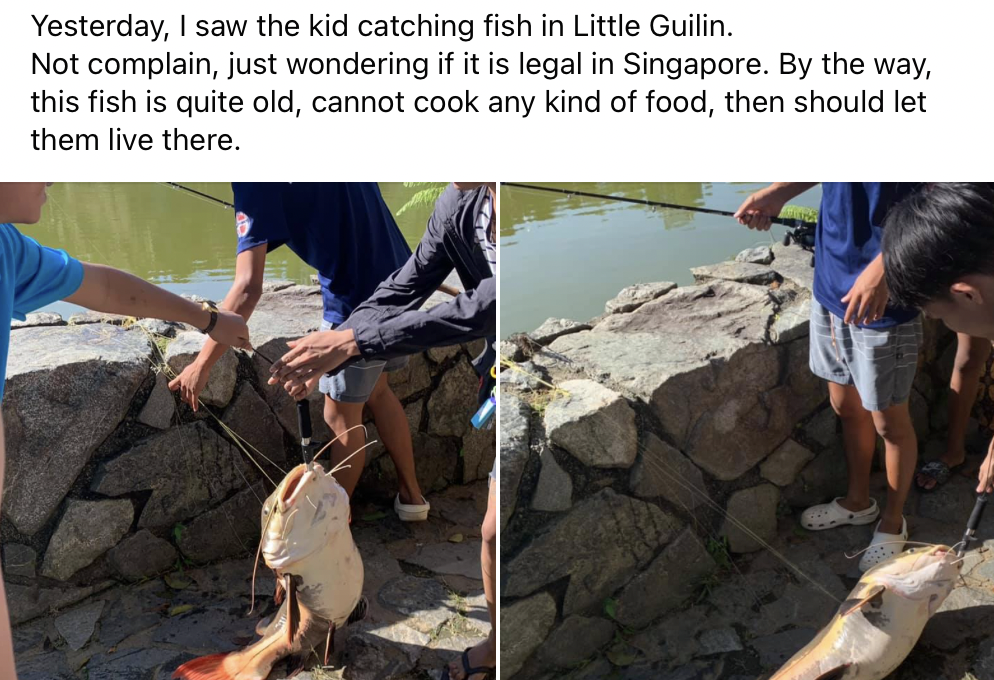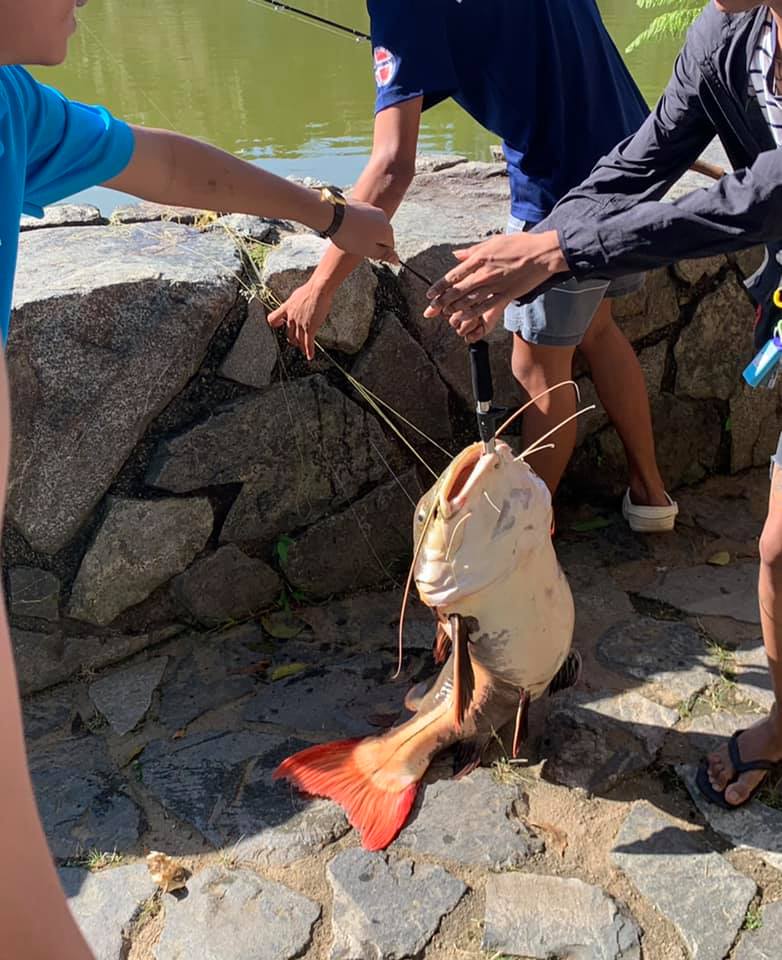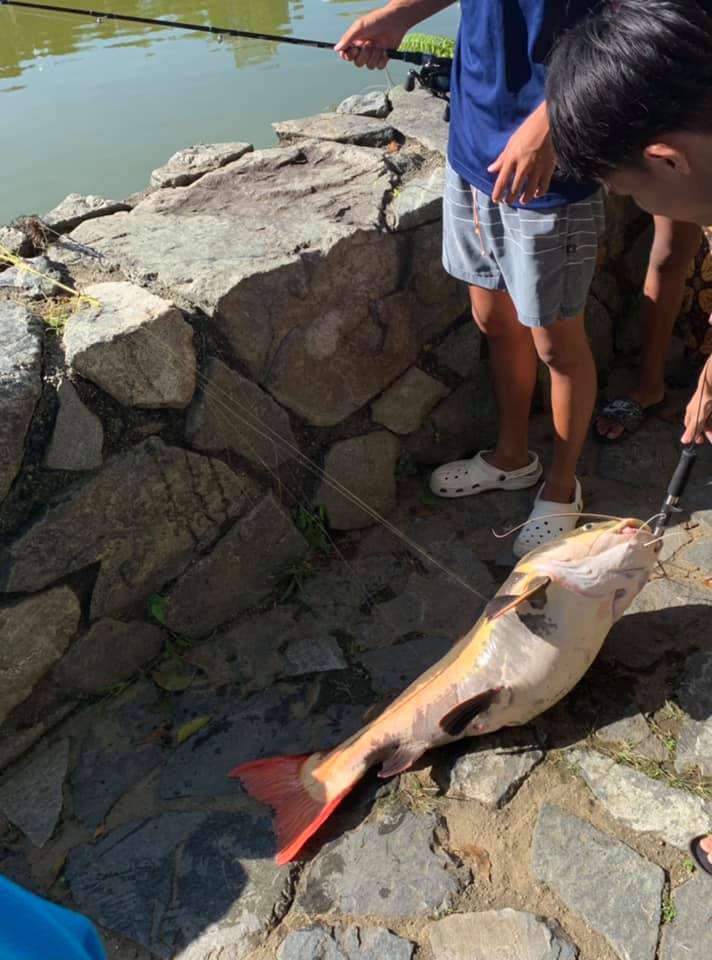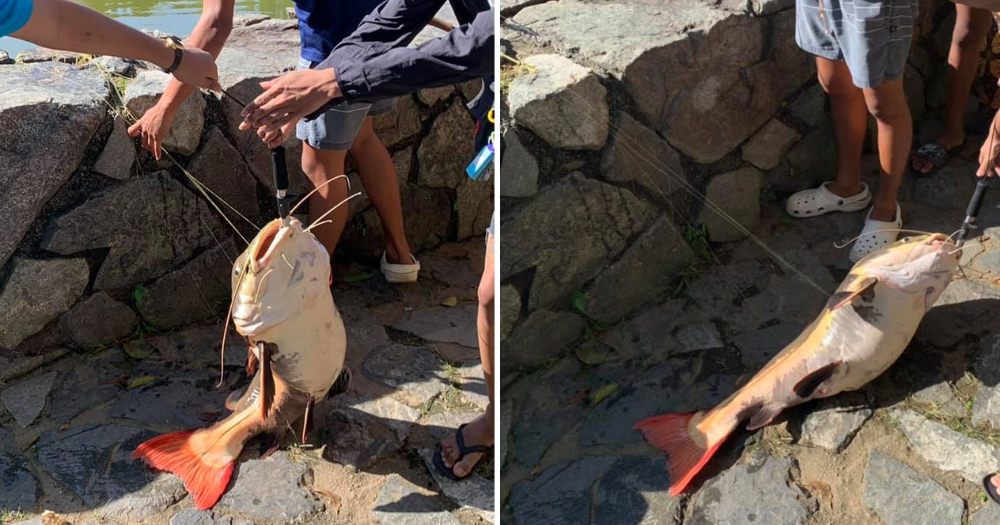A huge catfish was reeled in by an angler in Singapore recently.
Non-native catfish caught at Little Guilin
A member of public was visiting the Little Guilin at Bukit Batok Town Park on May 30 when she spotted the angler's catch. She then shared the sighting to Facebook group "Complaint Singapore" on May 31:

Here's a closer look at the size of it.
 Photo from Complaint Singapore/Facebook.
Photo from Complaint Singapore/Facebook.
 Photo from Complaint Singapore/Facebook.
Photo from Complaint Singapore/Facebook.
Can grow up to 1.8m
The fish, which appears to be a redtail catfish, is not native to Singapore, and hails from South America.
Adults can grow to around 1.8m in length. Despite this, juvenile redtail catfish are common in the aquarium trade.
The individual caught at Little Guilin could thus possibly have been a pet released by its owner when it grew too large to keep at home.
Although some in the comments asked if the fish was caught and subsequently released back into the waters, the OP claimed that the fish was not released.
She said she stood beside the anglers for 15 minutes, but the catfish remained on the ground and was likely dead within that time span.
Fishing is not allowed at Little Guilin
The OP also questioned if fishing is allowed at Little Guilin.
Fishing is legal at selected waterways and reservoirs in Singapore, the full list of which can be found on PUB's website here.
The National Parks Board (NParks) also details several parks where fishing is legal.
Bukit Batok Town Park does not appear in either of the lists.
According to PUB, those caught violating fishing regulations may be fined up to S$3,000.
It is also illegal to release, kill or take wildlife from parks and nature reserves, as per the Wildlife Act. A person who releases wildlife can be fined up to S$5,000, while someone who kills or takes wildlife from these areas can be fined up to S$10,000, imprisoned for up to six months, or both.
Recently, another angler drew attention after hauling in a large eagle ray at East Coast Park. The eagle ray is classified as vulnerable under the International Union for Conservation of Nature Red List of Threatened Species.
Subsequently, Karenne Tun, director of NParks' National Biodiversity Centre, said the catch-and-release method is preferred, and should be applied to "juveniles, endangered and threatened species".
Additionally, certain "No Fishing" areas in Singapore have been designated for fish to flourish and grow to maturity to protect the marine life.
Top photo from Complaint Singapore / FB
If you like what you read, follow us on Facebook, Instagram, Twitter and Telegram to get the latest updates.

